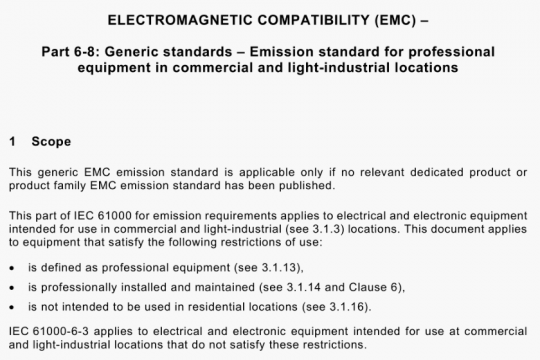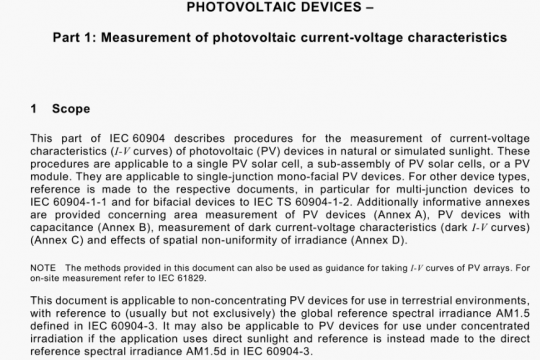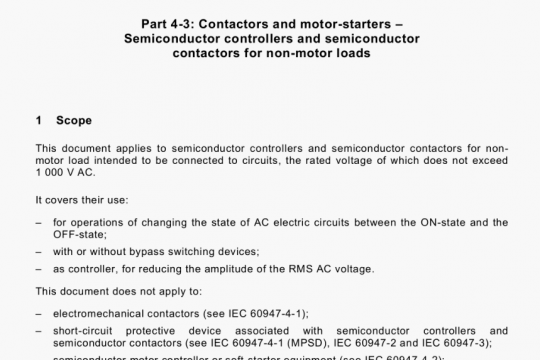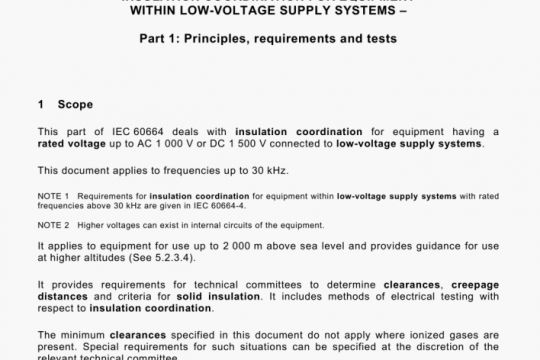CEI IEC 60747-6-2000 pdf free
CEI IEC 60747-6-2000 pdf free.Semiconductor devices – Part 6: Thyristors.
The following normative documents contain provisions which, through reference in this text, constitute provisions of this part of IEC 60747. For dated references, subsequent amendments to, or revisions of, any of these publications do not apply. However, parties to agreements based on this part of IEC 60747 are encouraged to investigate the possibility of applying the most recent editions of the normative documents indicated below. For undated references, the latest edition of the normative document referred to applies. Members of IEC and ISO maintain registers of currently valid International Standards.
IEC 60747-1:1983, Semiconductor devices — Discrete devices and integrated circuits — Part 1:
General
3 Terms and definitions
For the purpose of this part of IEC 60747, the following definitions, together with definitions from IEC 60747-1 and IEC 60050(521), apply.
NOTE 1 For unidirectional thyristors terms and definitions can be written in terms of either ‘node and cathode’ or principal and main. In this standard, the first alternative has been chosen because the second is less suitable for GTO thyristoii. In contrast, the second alternative had to be chosen for bidirectional triode thyristors as the first does not apply to them.
NOTE 2 Current and voltage terms and definitions for bidirectional diode thyristors use the adjective thyristor because reference to principal current or voltage would imply there is other current or voltage For the same reason, the adjective main is not used with the terminal designations for these devices.
Table 1 summarizes the qualifiers that could be chosen for voltages/currents and terminals.
3.1 Types of thyristors
3.1.1 Classification criteria
Thyristors are classified into subcategories using one or more of the following criteria
a) number of terminals:
— triode thyristor,
— diode thyristor;
b) way of acting in the third quadrant of the voltage-current characteristic:
— unidirectional.
— bidirectional;
C) physical kind of control:
— electrically controlled (this usual way of control is not indicated in the term),
— light-controlled;
d) control capabilities at the gate:
— only turn on (this restriction is usually not indicated in the term).
— gate turn-off capability (GTO thyristor);
e) controlled layer:
— P-gate thyristor (usual technology, not indicated in the term),
— N-gate thyristor.
3.1.2 thyristor (general)
semiconductor device that is capable, due to internal feedback, of assuming either of two stable states and maintaining the assumed state either with no sustained control current or voltage or at least with considerably less than that necessary to initially establish that state, and that is designed to operate as a switch for the principal or on-state current
NOTE 1 A thyristor Is a switch that can be switched on either for only one direction of the principal current (a unidirectional thyristor), or for both directions (a bidirectional Ihyristor).
NOTE 2 The usual configuration is a PNPN configuration to which can be added other elements needed for additional functions,
NOTE 3 The term ‘thyristor may be used for any member of the PNPN family when such use does not result in ambiguity or misunderstanding. In particular, the abbreviated term hyristor is widely used for the reverse-blocking triode thyristor, formerly called semiconductor controlled rectifier.CEI IEC 60747-6 pdf download.




